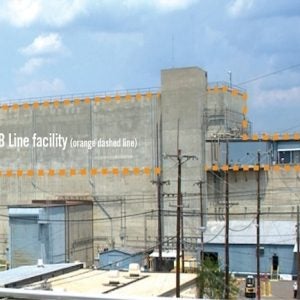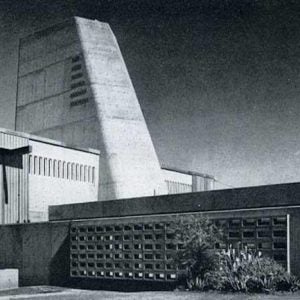 A study at the research neutron source Heinz Maier-Leibnitz (FRM II) of the Technical University of Munich (TUM) has shown how radioactive waste generated during the production of Technetium-99m (Tc-99m) could be significantly reduced.
A study at the research neutron source Heinz Maier-Leibnitz (FRM II) of the Technical University of Munich (TUM) has shown how radioactive waste generated during the production of Technetium-99m (Tc-99m) could be significantly reduced.
More than 85% of all nuclear medicine diagnostic tests use Tc-99m. In Germany alone, over 3 million Tc-99m cans are used every year.
Tc-99m is produced by irradiating uranium plates, or targets, with a high neutron flux that is practically only available in research reactors. First of all, uranium-235 produces molybdenum-99 (Mo-99), which decays to Tc-99m with a half-life of 66 hours. With a half-life of six hours, the latter converts to technetium-99, releasing the gamma radiation needed for diagnostics.
Current political efforts are also calling for the replacement of high-enriched uranium (HEU) with low-enriched uranium (LEU) in the medical field. The Mo-99 irradiation facility currently under construction at FRM II is now being designed for targets with low-enriched uranium.
"However, this results in a serious problem: the lower the enrichment of the uranium platelets with uranium-235, the lower the specific yield of Mo-99 during irradiation," said Dr Tobias Chemnitz, instrument manager at the MEDAPP medical irradiation facility at FRM II.
In order to be able to cover the world demand for Tc-99m, at least twice as many uranium plates have to be irradiated and processed, depending on the technology used, which also results in a correspondingly higher volume of waste.
The irradiated wafer contains only about 0.1% Mo-99, and to be sufficiently pure for medical applications, it must be carefully separated from the rest of the material. There are currently two common standard processes for this, based on an acidic and an alkaline process. In the alkaline variant, the entire target is first treated with caustic soda. Mo-99 prefers to go into solution – uranium, on the other hand, is insoluble in it and remains as a solid. The remaining products are then separated from the aqueous solution using complex chemical separation processes.
If LEU instead of HEU targets are used, the volume of radioactive waste produced doubles with the same molybdenum yield to an annual volume of up to 15,000 litres of aqueous, medium-level radioactive waste. This must still be cemented in order to be suitable for final storage. Thus Mo-99 production produces radioactive waste with a volume of 375,000 litres worldwide every year.
To tackle this problem, Chemnitz and his colleague Riane Stene developed a new method for extracting Mo-99 that does not use aqueous chemicals. In cooperation with the fluorine chemistry working group at the Philipps University in Marburg, they developed a system in which they reacted uranium-molybdenum test discs with nitrogen trifluoride in a plasma. The flakes had the same molybdenum content as would be present in targets that were irradiated. They then separated the excess uranium from the molybdenum using a light-controlled reaction. The separation of the two elements is as efficient as the wet-chemical separation, but by contrast does not produce any aqueous waste.
“There are currently six large irradiation facilities worldwide that produce Mo-99. Of these research reactors, four are already over 40 years old, which can lead to unforeseen repairs and subsequent shutdowns, as has happened in the recent past. Therefore, we are proud that here at the FRM II, together with the French reactor Jules-Horowitz, we will be able to meet the European demand for Mo-99 in the future," said Dr Chemnitz.
TUM has applied for a patent for the process. Even if further development work is still necessary, Chemnitz is confident that it will represent a sustainable alternative to the established processes in the medium term.
Photo: Dr. Tobias Chemnitz at the test facility for Mo-99 production at FRM II at the Garching research campus. (Credit: Reiner Müller, FRM II / TUM)






